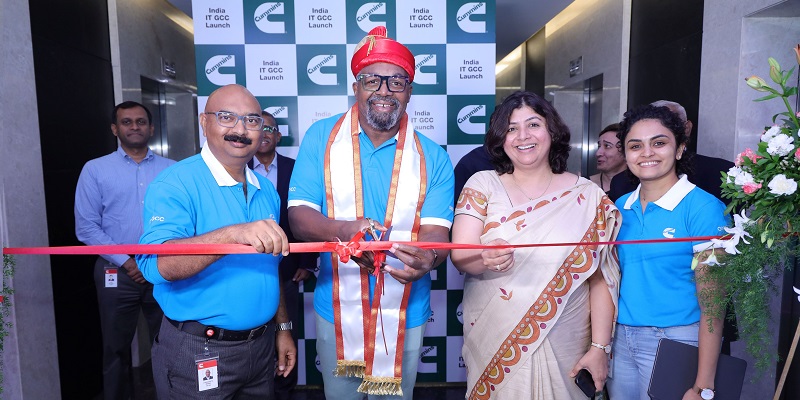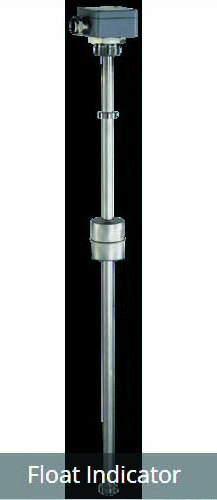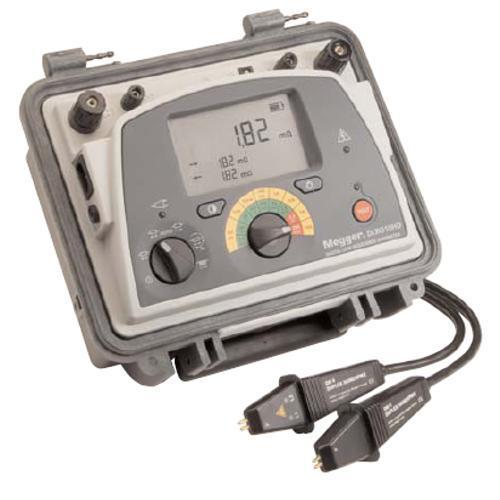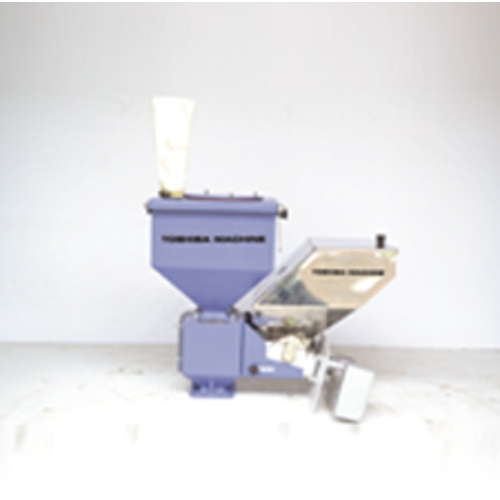Schedule a Call Back
Contamination control in turbine oils & control fluids
 Technical Articles
Technical Articles- Nov 30,-1

Pradeep Deshpande and Meghdoot Arwindekar explain the process of controlling contamination in turbine oils and control fluids.
The harmful effect of water and particulate contamination in hydraulic, lubrication and gear and other oils has been well documented. By maintaining absolutely clean and dry oil, the life of critical wear components in rotation and hydraulic equipment can be significantly extended, minimising equipment downtime, optimising it’s efficiency and maximising profitability. Modern day power plants use different oils like hydraulic oils, gear oils, lubricating oils for turbine bearing lubrication, etc. Conventional filtration methods like off-line filtration trolleys, electrostatic oil cleaner cleaners, bag filters, etc., are available for conventional mineral based oils. However turbine oils and turbine governor control oils need specifically designed oil filtration units.
The latest turbine governor control systems in power plants use special type of oils other than mineral oils. These are called as Electro Hydraulic Control (EHC) fluids, which are basically phosphate esters. Phosphate ester fluids used in turbine EHC systems are very safe fire resistant fluids that must be maintained in a narrow operating condition to ensure trouble-free operation.
The different types of contamination to be controlled in turbine oil and EHC fluids are:
Vacuum dehydration & purification system (VDPS)
Vacuum dehydration and purification system or VDPS is an ideal solution for water and solid particle removal. VDPS is designed to effectively remove free, emulsified and dissolved water, particulate and gaseous contamination from petroleum and synthetic based fluids. The water removal principle used is simple, reliable and will dependably remove water well below the oil saturation points, even when tightly bound in an emulsion. The high performance VDPS removes 100% of free water, air and gases; 90% of dissolved water, air and gases; and is capable of reducing water content to as low as 50% of saturation value and can reduce particle counts to ISO 14/13/10 or NAS 6 cleanliness levels.
Common sources of water contamination are heat exchanger and seal leaks, condensation, inadequate reservoir covers and temperature drops that lead to dissolved water becoming free. Entrained and dissolved gases can cause foaming and lead to cavitations of pumps, produce higher fluid temperatures and reduce system response time. Particulate contamination can cause premature components failure and lower the system sufficiency by increasing internal leakage in pumps, cylinders and other components.
Working principles
The attached Figure 1 shows schematically the VDPS operation. A vacuum pump creates a vacuum that draws fluid into the unit through a circulation heater, where the fluid temperature is raised to roughly 55o to 60o. Oil then flows over dispersion media or diffuser located inside the vacuum tower. Oil flows over this media where it is exposed to vacuum, normally 22-24” Hg (635 mm Hg). The boiling point of water is below the 60oC fluid temperature at that vacuum, so water and dissolved gases are “boiled off” and the fluid is effectively dehydrated. An oil discharge pump removes the dehydrated oil from the bottom of the vacuum chamber and pumps it through a high efficiency absolute rated particulate-removal filter element and back into the reservoir.
Effects of water and solid particle contamination
>> Corrosion of metal surfaces
>> Accelerated abrasive wear
>> Accelerated fatigue
>> Additive precipitation
>> Fluid oxidation
>> Viscosity variation
>> Reduced lubricity
>> Increased wear and tear of components
>> Reduction in life of critical components in system
>> Sludge formation, and
>> Operational problems in systems due to sluggish valve operation.
Acid control or TAN control
The unwanted acid formation is the result of oxidation and hydrolysis, mainly:
>> The fluid is hygroscopic – likes to absorb water
>> The fluid is exposed to high temperatures, and
>> Particulates, specifically metals, can have catalytic effect on acid formation.
An ester is an organic compound made by replacing the hydrogen of an acid by an ethyl hydrocarbon radical.
If the acid is phosphoric acid (orthophosphoric), and all 3 protons are replaced, we get the most basic phosphate ester.
Fundamentally this reaction is reversible:
>> Preventing acid formation in phosphate ester:
>> Keep water down well below saturation
>> Keep fluid free of particles, especially metallics
>> Prevent air entrainment to fend off micro dieseling
>> Vacuum dehydration is commonly used on EHC fluids, and
>> Some of the finest filters in power generation are used on turbine EHC systems to protect servo valves, usually in non bypass configuration (dirt-fuse line).
Resin treatment for acid treatment:
>> Based on the bonding of acid onto an “ion exchange resin”
>> Uses a resin to allow treatment without the use of a purifier, and
>> Resin is disposed of (not regenerated).
The other technology used is Nitrogen Purging. It uses nitrogen, which is useful for high humidity atmosphere. As air in the atmosphere is humid, the fluid which is hygroscopic can absorb water from air and cause increase in acidity. This is not the case for dry weather.
In these cases, vacuum dehydration unit in combination of acid control unit (resin technology) is useful to control the acidity below recommended level by OEMs.
Removing acids from phosphate ester fluids
Lowering the acid content of the fluid is a critical step in fluid remediation and preventative maintenance. Treatment with the IX Control fluid treatment system brings the fluid back to its OEM specified acid level for proper operation and extended fluid life. The unit does not release by-products typically found in traditional acid removal systems, such as water from wet resins or sludge from Fuller’s earth and activated alumina systems.
Efficiency and ease of use
Acid levels in the fluid can be lowered below OEM specified limits by recirculating it through the IX Control fluid treatment system. The stand alone system is equipped with a specially formulated resin, in a semi dry package. The skid uses resin cartridge in the vessel. They can easily be changed and send for replenishment. Each set of resin cartridge will typically treat 2000 litres of acidic phosphate ester and bring the TAN level down to below 0.1 from 0.5 mg of KOH/ml of oil based on the test results carried out by us.
Operation
The IX Control fluid treatment system is connected to the main oil reservoir and circulates the oil at a rate of up to 20 litres per minute through the pump and strainer to acid reduction unit and a high efficiency cartridge filter. With each pass through the system, acid compounds are captured on the resin and the fluid is returned to the reservoir.
The resin cartridge can be replaced with new one or used cartridge is to be sent back for replenishment once the acid levels start increasing during usage.
Operation methodology of acid treatment skid
The acid fluid treatment skid is a portable or stationary system designed to reduce TAN (total acid number) in phosphate ester based hydraulic systems.
The skid is manually controlled and equipped with a pump and motor to circulate the fluid into and out of the fluid treatment vessel. The fluid treatment vessel contains media in disposable element format. It is also equipped with particulate removal filter to prevent particulate contamination entering into the system. The skid is designed to operate on continuous off-line recirculation configuration.
The rate and efficiency of TAN reduction by acid treatment unit depends on a number of factors which include, but are not limited to, the type of fluid, the type of acid, turbine type, system operating conditions, duty cycle, temperature, nature and extent of the acid, acid generation rate and other contaminants present in the fluid system.
Pradeep Deshpande is CEO, SMC Hydraulics Group, Pune and Meghdoot Arvindekar is an Independent Consultnt in filtration technology. Email: pradeep@smchydraulicsgrp.com
Related Stories

Cummins India inaugurates global competency IT centre in Pune
The centre aims to harness talent in software engineering and emerging digital technologies like Artificial Intelligence (AI), Machine Learning (ML), and Robotic Process Automation (RPA).
Read more
Continental & Amazon Web Services creates software solutions for mobile robots
Continental's comprehensive AMR solutions comprise robot hardware, an advanced autonomy software stack and AI-enabled fleet management software supported by strong partners.
Read more
GOI to implement equal 5% GST on all aircraft and engine parts to boost industry
The uniform tax rate is expected to reduce operational costs, resolve tax credit issues, and attract investment in the MRO sector.
Read moreRelated Products

Float Indicator
Charun instruments offers float indicator, which is used for fluid level measurement in several industries.

Digital Low Resistance Ohm Meter
SM Systems offers 10 amp digital low resistance ohm meter,
which is used in various sectors for different kinds of measurement purposes.

Blending Units
Toshiba Machine (Chennai) Pvt Ltd
offers blending units.












